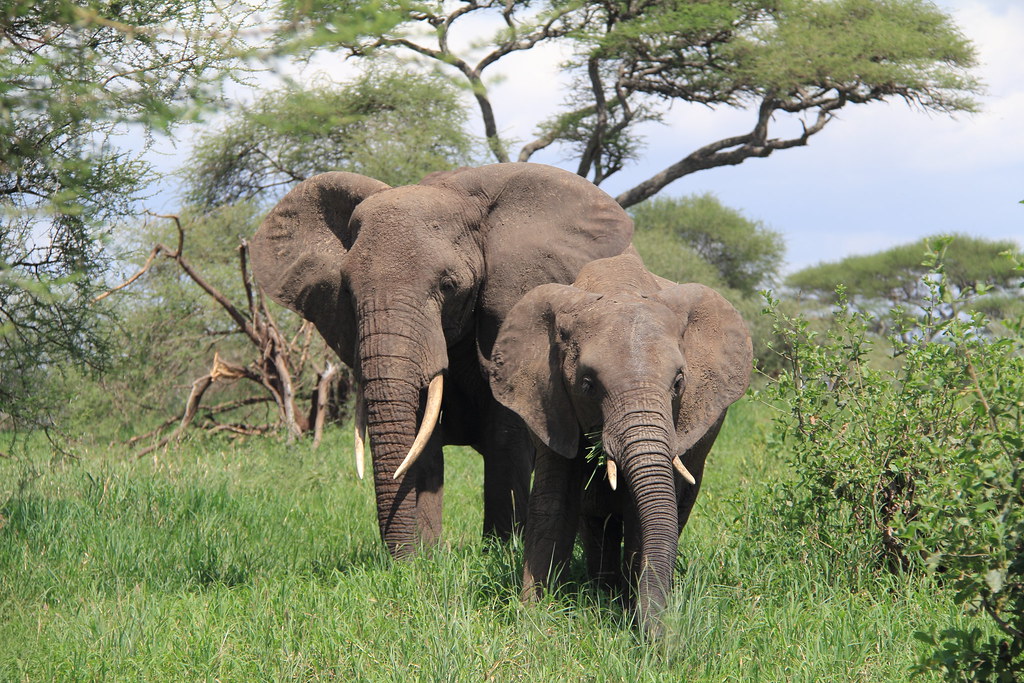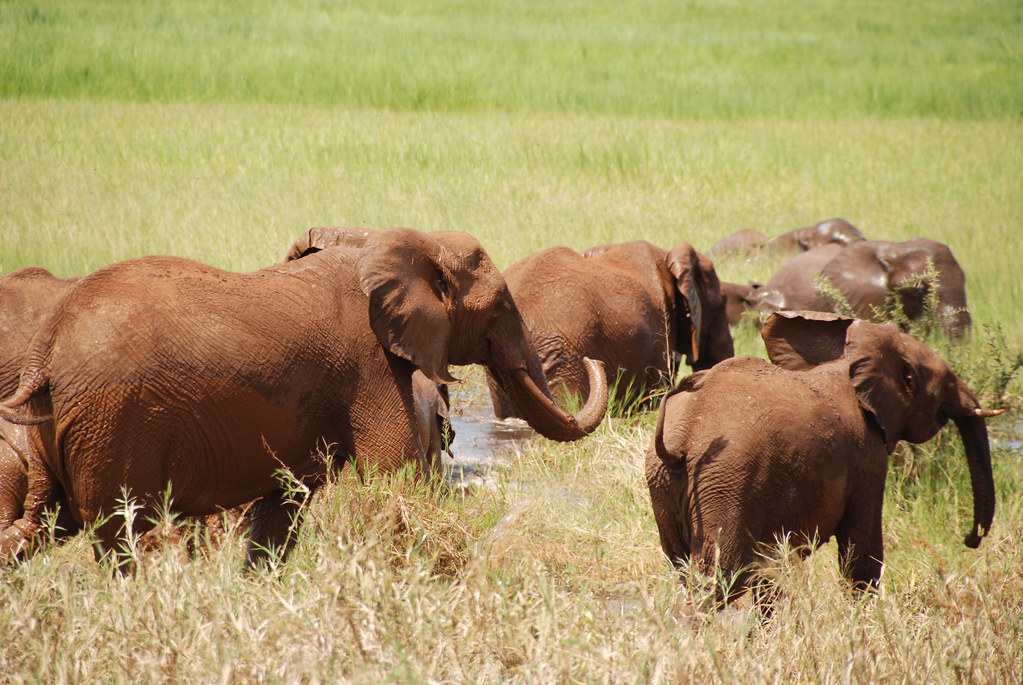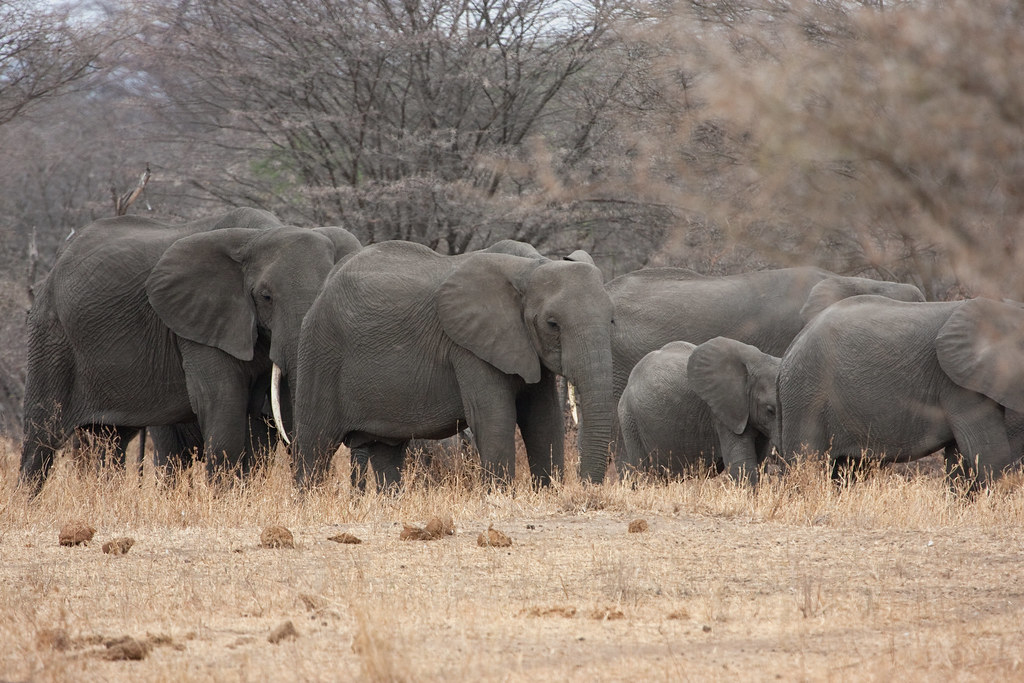African Elephant (Loxodonta africana)
Elephant: The Majestic Giant of the African Savannah
Elephants, the largest land mammals on Earth, are synonymous with the African wilderness. Known for their remarkable intelligence, deep social bonds, and massive size, elephants are a vital part of Africa’s ecosystems. Their grandeur and gentle nature make them one of the most iconic animals to spot on safari. With their characteristic trunks and large ears, elephants are not just a symbol of power but also of wisdom and emotional depth. Watching an elephant roam freely across the savannah or interact with its herd is one of the most awe-inspiring moments you can experience on an African safari.
The African Elephant: Facts, Behavior, and Where to Spot Them In Africa
Where to Find Elephants on Safari
Elephants are found throughout sub-Saharan Africa, and their range spans across a variety of habitats, from the dense forests of central Africa to the open savannas of southern and eastern Africa. The best places to spot elephants are national parks and reserves that are home to large herds, where you can witness these majestic animals in their natural environment. One of the top safari destinations for elephant sightings is the Amboseli National Park in Kenya, where elephants roam freely against the stunning backdrop of Mount Kilimanjaro. In Botswana, the Okavango Delta and Chobe National Park are renowned for their large elephant populations, particularly during the dry season when herds gather at water sources. South Africa’s Kruger National Park is another prime location for seeing elephants, with herds regularly encountered in the park’s open plains and near waterholes. The Serengeti National Park in Tanzania also offers excellent opportunities for spotting elephants, particularly during the annual migration when large herds traverse the landscape.
Best Time to See Elephants
Elephants are active throughout the day, but the best times to see them are early in the morning and late in the afternoon when temperatures are cooler. These are also the times when elephants are most likely to be grazing, drinking from waterholes, or moving between locations. The dry season, from June to October, is especially good for elephant sightings, as waterholes become concentrated areas where elephants gather to drink and cool off. During this time, their movements are easier to track, and the animals’ behavior around waterholes can be fascinating to observe.
The Elephant’s Role in Africa’s Ecosystems
Elephants play a pivotal role in shaping the African landscape. As herbivores, they consume vast amounts of vegetation, and their feeding habits help maintain the open savannas and forests of Africa. By uprooting trees and breaking down large bushes, elephants prevent certain plant species from becoming too dominant, thus promoting biodiversity. Their movements across the land also create pathways that other animals can use. Moreover, elephant dung provides essential nutrients for the soil, which in turn benefits a variety of plants and smaller animals.
Beyond their impact on the environment, elephants also influence the lives of other species. Many animals, from birds to smaller mammals, rely on the food and water sources that elephants create. For example, when elephants dig for water in dry riverbeds, they often expose water that other animals can access, creating a ripple effect throughout the ecosystem. Their presence is integral to maintaining the balance of the wild.
Elephant Behavior: Intelligence, Family, and Social Structure
Elephants are highly social animals with complex family dynamics. Their social structures are matriarchal, meaning that the oldest female elephant leads the herd. Elephants are known for their intelligence, empathy, and emotional bonds, and they form deep connections within their herds. They communicate with each other through a variety of sounds, from trumpets to low-frequency rumbles that can be heard over long distances. These vocalizations are crucial for coordinating movements and warning others of potential threats.
Elephants are also remarkable for their memory. They can remember locations, other elephants, and even humans for many years. This ability helps them navigate their environment, find water, and stay safe from predators. The bond between mothers and their young is especially strong, with elephants caring for their calves for several years before they are fully independent. This strong sense of family and loyalty adds to the emotional depth of encountering an elephant herd in the wild.
How to Spot Elephants on Safari: Tips and Tricks
Elephants are generally easy to spot due to their size, but tracking them can sometimes require a bit of patience and knowledge of their habits. They tend to stay near water sources, especially during the dry season, so looking for them around lakes, rivers, and waterholes is often a good strategy. Keep an eye out for the sound of trumpeting or the movement of large, powerful bodies breaking through the vegetation. Early morning and late afternoon are the best times to observe elephants, as they are more active during these cooler hours.
If you’re lucky, you might witness one of the most heartwarming behaviors of elephants—their interaction with one another. Calves play and frolic around their mothers, while the older elephants help guide the herd. Watching this behavior is a powerful reminder of the deep social bonds that elephants form.
Fun Facts About Elephants
Elephants are not just awe-inspiring in their size but also in their fascinating characteristics. Here are some interesting facts about them:
Impressive Memory: Elephants are known for their remarkable memory, and their ability to recall locations, individuals, and events is often considered to be on par with some of the most intelligent animals.
Trunk Versatility: An elephant’s trunk is a highly versatile tool. It can be used for drinking, feeding, picking up objects, and even greeting other elephants.
Incredible Lifespan: Elephants can live for up to 60 to 70 years in the wild, with some individuals living well into their golden years.
Large Families: Elephant herds are matriarchal, and a typical herd may consist of several related females and their offspring. Males usually leave the herd once they reach adolescence.
Why Elephants Are a Must-See on Your Safari
There’s no experience quite like encountering an elephant on safari. These majestic animals embody the spirit of Africa, with their immense size, strong family bonds, and profound intelligence. Whether you’re observing a herd graze in the open plains, watching a mother care for her calf, or hearing the trumpeting calls that echo through the savanna, elephants provide an unforgettable safari experience. They’re not just one of Africa’s Big Five but are an essential part of the continent’s natural heritage, making them a must-see for any safari-goer.





